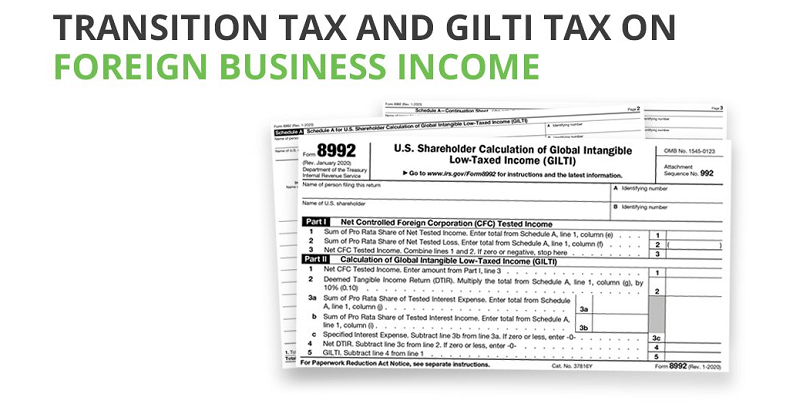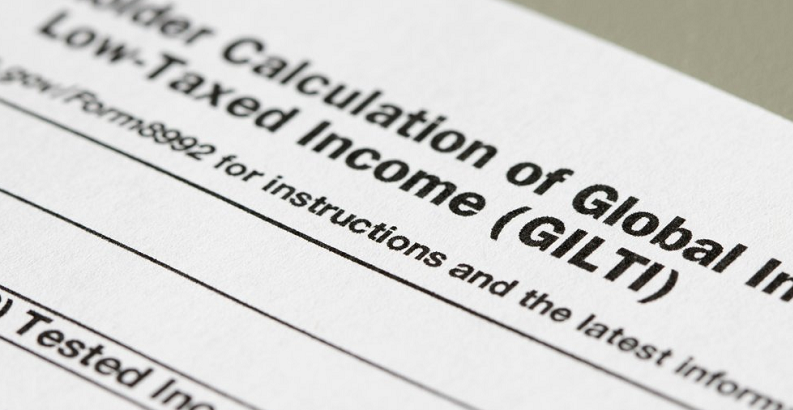
In today’s globalized economy, many C-Corporations find themselves navigating the complexities of foreign income. Whether you’re expanding business operations abroad or entering partnerships with foreign entities, understanding how to properly handle foreign income is crucial. The U.S. tax system, with its intricate laws and regulations, requires businesses to be meticulous in reporting and managing income from outside its borders. Here we examine the intricacies of foreign income taxation for C-Corporations, guiding you through essential topics like tax treaties, repatriation, and strategies for minimizing your tax liability.
Contents
- Basics of Foreign Income for C-Corporations
- U.S. Taxation of Foreign Income
- Foreign Tax Credits
- Repatriation of Foreign Earnings
- Tax Treaties and Their Impact on C-Corporations
- Strategies for Minimizing Foreign Income Tax Liability
- References
Basics of Foreign Income for C-Corporations
The U.S. tax system places significant importance on differentiating domestic from foreign earnings, and as such, understanding these basics is paramount.
Definition of Foreign Income for Businesses
Foreign income, in the context of a C-Corporation, refers to all income that the corporation earns from its activities outside the United States. This includes, but is not limited to, sales of goods and services, rental income from properties owned overseas, dividends from foreign subsidiaries, and interest from foreign-held investments. Essentially, if the source of the income is from outside U.S. borders, it falls under the category of foreign income.
Common Sources of Foreign Income for C-Corporations
C-Corporations operate in a myriad of industries, and as they venture outside domestic boundaries, the avenues through which they earn become diverse. Here are some common sources.
Sales and Services
Just like domestic operations, the primary source of foreign income for many corporations is from the sale of goods and services in international markets.
Foreign Investments
C-Corporations often invest in foreign stocks, bonds, and other securities. The dividends, interest, and potential capital gains from these investments are a source of foreign income.
Rental Income
Owning property overseas, be it commercial or residential, can provide a steady stream of rental income. This becomes particularly lucrative in areas with booming real estate markets.
Royalties and Licensing Fees
Intellectual property, such as patents, trademarks, and copyrights, can be licensed to foreign entities. Royalties and licensing fees derived from these agreements constitute foreign income [1].
Foreign Subsidiaries
C-Corporations may establish subsidiaries in foreign countries. Profits from these subsidiaries, when repatriated back to the U.S., form a part of the corporation’s foreign income.
U.S. Taxation of Foreign Income
Navigating the realm of foreign income means understanding the intricacies of how the United States taxes these earnings. Contrary to what some might expect, the U.S. does not solely focus on domestic income. In fact, its tax umbrella often extends globally, capturing revenue generated by American entities abroad. Let’s delve into the specifics of how the U.S. tax system treats foreign income, especially in the context of C-Corporations.
Overview of U.S. Worldwide Taxation System
The United States operates under a worldwide taxation system for its citizens and resident entities, including C-Corporations. This means that U.S. companies are taxed on their worldwide income, irrespective of where it was earned. While this global reach might sound daunting, it’s important to note that credits for foreign taxes paid and other mechanisms exist to mitigate the potential for double taxation. However, the essence remains: a U.S. C-Corporation earning abroad will need to account for those earnings on its U.S. tax return.
Explanation of Subpart F Income
One significant aspect of U.S. taxation on foreign earnings is the concept of Subpart F income. Established under the Subpart F rules, this provision targets passive income and certain types of mobile income earned by Controlled Foreign Corporations (CFCs). A CFC is a foreign corporation where more than 50% of its shares (by vote or value) is owned by U.S. shareholders.
The primary goal of Subpart F is to prevent U.S. entities from deferring U.S. taxation by keeping passive income in offshore subsidiaries. Income falling under Subpart F rules—like dividends, interest, rents, and royalties—is taxed currently in the hands of the U.S. shareholders, even if not distributed.
Introduction to Global Intangible Low-Taxed Income (GILTI)
An evolution in the U.S. approach to foreign income is the concept of Global Intangible Low-Taxed Income (GILTI). Introduced by the Tax Cuts and Jobs Act in 2017, GILTI aims to tax U.S. entities on income earned by their foreign affiliates if this income exceeds a deemed return on tangible assets.

Foreign Tax Credits
For C-Corporations with foreign operations, the prospect of facing taxes in multiple jurisdictions can be daunting. Fortunately, the U.S. tax system acknowledges the challenges of potential double taxation and provides mechanisms to offset this burden. Among these, the Foreign Tax Credit (FTC) stands as a key tool for U.S. entities to avoid paying tax on the same income twice – once abroad and then again domestically. Grasping how the FTC works can be invaluable for corporations striving for tax efficiency.
Purpose and Function of Foreign Tax Credits
At its core, the FTC is designed to mitigate the impact of double taxation for U.S. taxpayers. When a C-Corporation pays taxes on its income in a foreign country and is then subsequently taxed by the U.S. on the same income, the corporation can often claim a credit for the foreign taxes paid. This credit reduces the U.S. tax liability, ensuring that the income isn’t unduly taxed twice [2].
For example, if a C-Corporation earns income in a foreign country and pays 20% of it in taxes there, and then the U.S. tax rate for that same income is 35%, instead of paying the full 35%, the corporation can claim a credit for the 20% already paid, owing only the difference in the U.S.
Limitations and Eligibility
While the FTC is a valuable tool, it isn’t without its constraints.
Credit vs. Deduction
Taxpayers can choose either to claim the credit or to take a deduction for foreign taxes paid. The credit is typically more beneficial, but specific circumstances might make the deduction more appealing.
Limitation on Amount
The credit cannot exceed the total U.S. tax liability on foreign source taxable income. In essence, you can’t use the FTC to generate a U.S. tax refund.
Separate Basket Limitation
Different types of income (e.g., passive, general) are considered in separate “baskets” for FTC purposes, and credits can’t typically be mixed between them.
Carryback and Carryforward
If the credits exceed the limitation in a given year, the excess can often be carried back one year and carried forward for ten years.
Eligibility
Not all foreign taxes qualify for the credit. To be eligible, the tax must have a predominant character of an income tax in the U.S. sense.
How to Claim the Credit
For C-Corporations wishing to claim the FTC.
Form 1118
This form, “Foreign Tax Credit – Corporations,” is used by corporations to claim the foreign tax credit.
Documentation
Corporations should maintain comprehensive records of foreign taxes paid, as these may need to be substantiated in the case of audits or inquiries.
Annual Assessment
The value of the FTC can vary year by year based on both U.S. and foreign tax liabilities. Corporations should assess their eligibility and the potential value of the credit annually.

Repatriation of Foreign Earnings
In the dynamic world of global commerce, many U.S. C-Corporations establish profitable ventures abroad. However, the benefits from these overseas undertakings often pose a conundrum when it comes to bringing those profits back to the U.S., a process known as repatriation. Repatriating foreign earnings carries tax implications, and understanding these is pivotal for corporations seeking to maximize their after-tax returns.
Explanation of Repatriation
At its most basic, repatriation refers to the process of bringing back foreign earnings to the U.S. from overseas operations or investments. For C-Corporations, this typically means dividends sent back from foreign subsidiaries to the U.S. parent company. While this might seem straightforward, the act of repatriation is laden with tax considerations, as these dividends can be subject to U.S. corporate income tax [3].
Tax Implications of Repatriating Earnings
Upon repatriation, the dividends received by the U.S. parent company are generally considered taxable income. Here’s a breakdown of the key implications.
Taxation at the Corporate Level
Before the Tax Cuts and Jobs Act (TCJA) of 2017, U.S. corporations could defer U.S. tax on active business earnings of their foreign subsidiaries until those earnings were repatriated. However, post-TCJA, while there’s a shift towards a more territorial system, not all foreign earnings can be brought back tax-free.
Participation Exemption System
The TCJA introduced a 100% dividends-received deduction for dividends from foreign subsidiaries. This means certain dividends from foreign corporations can be exempt from U.S. taxation upon repatriation.
Transition Tax
A one-time transition tax was imposed on certain untaxed foreign earnings accumulated before the TCJA, essentially serving as a “toll charge” to switch to the new territorial system.
State-level Taxes
Beyond federal implications, some states might tax repatriated income, and these taxes often don’t offer foreign tax credits, leading to potential double taxation.
Strategies for Minimizing Repatriation Taxes
With the complexities of repatriation, adopting strategies to minimize the associated tax burden becomes crucial.
Timing
Consider the timing of repatriation to align with favorable tax rates or circumstances both domestically and abroad.
Loan Strategy
Instead of formal repatriation, corporations can have their foreign subsidiaries lend funds to the U.S. parent, potentially circumventing dividend taxes. However, this strategy has limitations and might attract scrutiny.
Leveraging Tax Treaties
U.S. has tax treaties with numerous countries, which can offer reduced tax rates on dividends or other financial benefits.
Reinvestment
Instead of repatriating funds, consider reinvesting them in the foreign subsidiary’s operations, delaying potential U.S. taxation.

Tax Treaties and Their Impact on C-Corporations
While the U.S. tax system has robust mechanisms in place to govern foreign income and repatriation processes for C-Corporations, the international landscape is, in many ways, defined by a series of tax treaties. These treaties are bilateral agreements between countries, designed to prevent double taxation and promote mutual economic cooperation. For C-Corporations operating on a global scale, understanding the implications of these treaties can be a linchpin in their international taxation strategy.
What are Tax Treaties?
At their essence, tax treaties are agreements between two countries that outline the tax treatment of residents and businesses operating in either or both countries. These treaties aim to prevent scenarios where a single stream of income could be taxed by both nations. They set the ground rules, providing clarity on which country has the right to tax specific types of income [4].
Key Provisions Affecting C-Corporations
Each tax treaty is unique, reflecting the specific relationship and negotiations between the involved countries. However, many treaties share common elements that directly impact C-Corporations.
Dividend Taxation
Many treaties reduce the withholding tax rates on dividends paid by a subsidiary in one country to its parent company in another.
Interest and Royalties
Just as with dividends, tax treaties often cap or reduce the tax rate on interest and royalty payments made across borders.
Permanent Establishment
This concept defines when a business’s presence in another country is substantial enough to be taxed by that country. Tax treaties often outline specific criteria to clarify what constitutes a “permanent establishment.”
Transfer Pricing
To prevent corporations from manipulating pricing in transactions between related entities to reduce tax liabilities, treaties may establish guidelines for determining appropriate prices for these intercompany transactions.
Dispute Resolution
Many treaties include provisions for resolving tax disputes between the two countries, providing a clearer and often more efficient pathway than navigating two separate national legal systems.
How C-Corporations Can Benefit
Harnessing the benefits of tax treaties requires proactive steps from C-Corporations.
Research and Documentation
Before venturing into a new market, corporations should be well-versed in the relevant tax treaty provisions. Documentation supporting the applicability of treaty benefits should always be maintained.
Claiming Benefits
In some cases, treaty benefits are automatically applied, but in others, corporations must actively claim them, often via specific forms or filings.
Review and Update
Tax treaty benefits are subject to change. Treaties can be renegotiated, and domestic tax laws can evolve. Regular reviews ensure that corporations remain compliant and continue to harness available benefits.
Local Expertise
Engaging local tax professionals in the foreign country can provide insights that might be overlooked from a purely U.S.-centric perspective.
Strategies for Minimizing Foreign Income Tax Liability
As globalization continues to shape the business landscape, C-Corporations with operations abroad must adapt to navigate the maze of international tax rules. Effective tax planning and strategy are essential to ensuring that these corporations remain competitive and profitable in international markets. Minimizing foreign income tax liability doesn’t just mean paying less in taxes; it’s about harnessing opportunities, optimizing resources, and driving growth.
Localized Business Structures
One of the foundational decisions a corporation makes when expanding internationally is how it structures its business operations in the foreign country. The chosen structure can significantly influence the overall tax liability [5].
Subsidiaries vs. Branches
Operating through a foreign subsidiary often allows income to be contained within that entity and potentially defer U.S. tax until profits are repatriated. In contrast, a branch’s income is typically immediately subject to U.S. tax, even if not repatriated.
Holding Companies
In regions with multiple countries, like Europe, setting up a holding company in a jurisdiction with favorable tax rates and treaties can be beneficial. Such a setup allows income to flow through the holding company, potentially leveraging lower tax rates.
Income Shifting Strategies
Intelligent allocation of income-generating assets and functions can influence where and how much tax a corporation pays.
Transfer Pricing
Properly pricing transactions between related entities is paramount. While it’s crucial to comply with arm’s length standards, corporations can structure their operations to maximize deductions in high-tax jurisdictions and report income in lower-tax ones.
Intellectual Property Planning
By locating intellectual property (like patents or trademarks) in low-tax jurisdictions, and then charging subsidiaries in higher-tax countries for its use, corporations can shift income to where it’s taxed less.
Utilizing Tax Incentives and Credits
Countries often offer tax incentives to attract foreign investment.
Research and Development (R&D) Credits
Many countries provide generous tax credits for companies that conduct R&D within their borders.
Investment Incentives
Tax breaks or holidays may be available for significant capital investments, such as building manufacturing facilities.
Leveraging Foreign Tax Credits
As discussed earlier, the U.S. offers credits for taxes paid abroad. Proper tracking and claiming of these can significantly reduce U.S. tax liability.
Efficient Repatriation of Profits
Strategically repatriating profits can maximize after-tax returns.
Timing
Consider repatriating when U.S. tax rates are favorable or when foreign taxes have already minimized U.S. tax on repatriated amounts.
Intercompany Debt
As an alternative to dividends, using intercompany loans can sometimes allow funds to be returned to the U.S. parent with a different tax consequence.
Reinvestment Decisions
Sometimes the best strategy might be to leave profits overseas, reinvesting them in growing the foreign operations, rather than repatriating and facing the associated U.S. tax.
References
[1] Foreign Tax Credit Compliance Tips
[2] The Basics to Know About Foreign Tax Credits
[3] International Taxation: A Guide for U.S.
Corporations
[4] Corporate Income Tax FAQs
[5] I Own Several Businesses, How Should I File Taxes?
